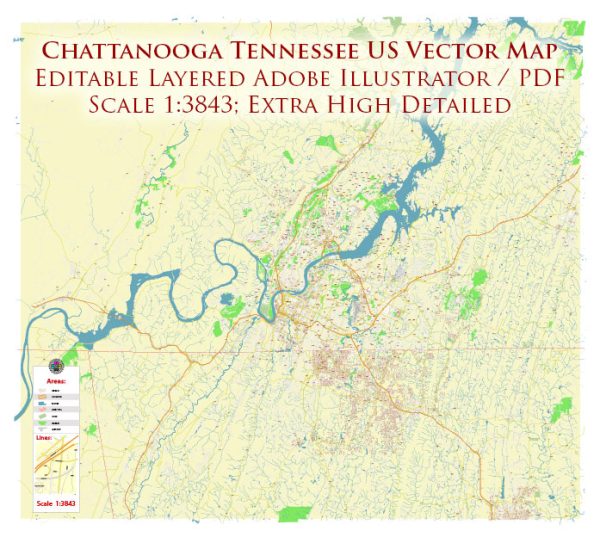Chattanooga, Tennessee, has a rich and varied history that has contributed to its growth and development over the years. Here is a brief description of the city’s history:
- Native American Settlements: Before European settlement, the area that is now Chattanooga was inhabited by various Native American tribes, including the Cherokee. The region was situated at the crossroads of trade and transportation routes, making it a significant location for indigenous peoples.
- Early European Settlement: European settlers began to arrive in the late 18th century, and the city was officially founded in 1838. Chattanooga’s name is derived from the Creek word “Chatto” (rock) and “Ooga” (to dig), referring to the city’s location along the Tennessee River.
- Civil War Significance: Chattanooga played a pivotal role during the American Civil War. It was a key transportation and supply hub for the Confederacy. The city was twice besieged by Union forces, with the most significant being the Battle of Chattanooga in 1863. After a series of battles, the Union Army, under General Ulysses S. Grant, gained control of the city, which was a turning point in the war. Chattanooga’s role in the Civil War is commemorated at several historic sites, including Point Park on Lookout Mountain.
- Post-Civil War Era: Following the Civil War, Chattanooga rebuilt its economy and infrastructure. The city’s strategic location along the Tennessee River and the railroads contributed to its industrial growth. Iron and steel production, manufacturing, and trade played a significant role in the city’s development.
- Chattanooga Choo Choo: In the mid-20th century, Chattanooga became famous for the song “Chattanooga Choo Choo,” which highlighted its railroad history. The Chattanooga Choo Choo Terminal Station was a well-known train station and hotel, although it later became a historic hotel and entertainment complex.
- Riverfront Revitalization: In recent decades, Chattanooga has focused on revitalizing its riverfront, including the creation of parks, walkways, and attractions along the Tennessee River. The Tennessee Aquarium, which opened in 1992, is one of the city’s major attractions and is a symbol of the city’s environmental and cultural initiatives.
- Economic Development: Chattanooga has diversified its economy beyond traditional manufacturing to include industries such as automotive manufacturing, healthcare, and technology. The city is home to several major corporations and is known for its innovation and entrepreneurship.
- Outdoor Recreation: The city’s proximity to the Appalachian Mountains has made it a hub for outdoor enthusiasts. Activities like hiking, rock climbing, and water sports are popular in and around Chattanooga. The city’s outdoor offerings have contributed to its reputation as a desirable place to live and visit.
Chattanooga’s history is marked by its strategic location during the Civil War, industrial development, and more recent revitalization efforts. It has grown into a vibrant and culturally diverse city, known for its blend of history, natural beauty, and modern amenities.


 Author: Kirill Shrayber, Ph.D.
Author: Kirill Shrayber, Ph.D.